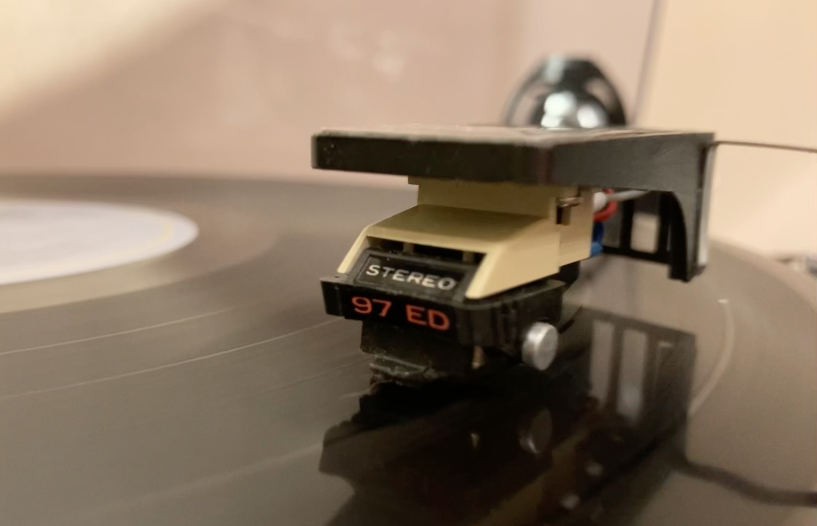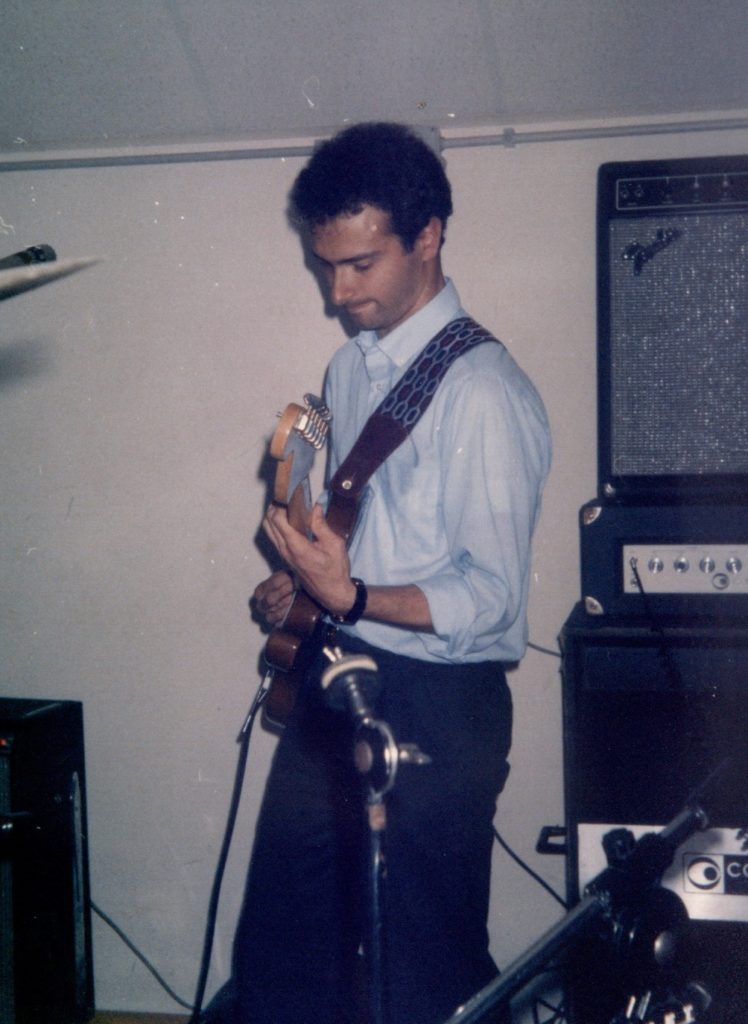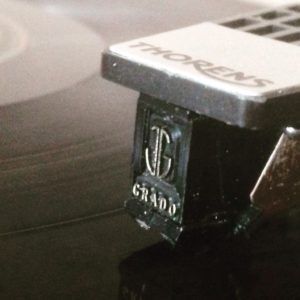 If my two and a half readers have followed my posts about turntable cartridges, they will have found them rather erratic. In one of them I admitted complete confusion. There are reasons to that. The first one is I had changed integrated amplifier, speaker cables and listening room in a short time period. I lost control on my overall sound so I was not sure what was going on. My few readers would know I am fond of Grado cartridges and the way the company is family-run in the old legendary labs in Brooklyn, NY. But I had some misfortune with my Grado styli and broke the two I had just when I had lost my job and could not spend money on that stuff. Something happened in that period that made me think twice about my favorite brand and caused some confusion in what I believed were my tastes. I found a Shure cart for free from a broken turnable.
If my two and a half readers have followed my posts about turntable cartridges, they will have found them rather erratic. In one of them I admitted complete confusion. There are reasons to that. The first one is I had changed integrated amplifier, speaker cables and listening room in a short time period. I lost control on my overall sound so I was not sure what was going on. My few readers would know I am fond of Grado cartridges and the way the company is family-run in the old legendary labs in Brooklyn, NY. But I had some misfortune with my Grado styli and broke the two I had just when I had lost my job and could not spend money on that stuff. Something happened in that period that made me think twice about my favorite brand and caused some confusion in what I believed were my tastes. I found a Shure cart for free from a broken turnable.
My musical evolution
 Music has always been fundamental to me. It’s the only art form that grabs me from within and shakes my being. Or at least it’s the only one I’m really in deep contact with. I’ve never created music. Maybe I don’t think I’m up to it, maybe it’s because I always feel like what would come out of me would be less appealing than what I listen to anyway. I play guitar in a band that does covers of rock songs by various authors. Ever since I was a kid I used to sing by memorizing the lyrics from the radio. When I memorized my first tune I was not yet in school. From the first year of school I remember that I used to play the same single 45 rpm record over and over again on one of my uncle’s portable turntable. I kept learning Italian melodic tunes. This is what radio and TV were offering at the time. My parents weren’t very musical, they didn’t listen to anything in particular. I only had the Hit Parade on the radio and it was almost all melodic Italian music. That was what I had and that was what I sang. Immediately my sister, two years younger, followed in my footsteps.
Music has always been fundamental to me. It’s the only art form that grabs me from within and shakes my being. Or at least it’s the only one I’m really in deep contact with. I’ve never created music. Maybe I don’t think I’m up to it, maybe it’s because I always feel like what would come out of me would be less appealing than what I listen to anyway. I play guitar in a band that does covers of rock songs by various authors. Ever since I was a kid I used to sing by memorizing the lyrics from the radio. When I memorized my first tune I was not yet in school. From the first year of school I remember that I used to play the same single 45 rpm record over and over again on one of my uncle’s portable turntable. I kept learning Italian melodic tunes. This is what radio and TV were offering at the time. My parents weren’t very musical, they didn’t listen to anything in particular. I only had the Hit Parade on the radio and it was almost all melodic Italian music. That was what I had and that was what I sang. Immediately my sister, two years younger, followed in my footsteps.
Sunday morning guitar players
Anyone can buy a guitar, get some practice (Youtube would be enough), take some lessons or advice from someone who already plays and then declare “I play guitar”. That’s what I did. An uncle gave my sister and me his guitar when we were 9 and 11 respectively. We experimented based on the first chords our uncle gave us. And we moved on. I in particular focused on being a guitarist, learning solos as well. Then when I was 16 the electric guitar arrived and by the time I was 20 we had a small band playing the songs of our heroes in the rehearsal rooms. When people say “I play guitar” it doesn’t mean much. I’ve always said that about myself – I play guitar – but what does it really mean? Do I play it alone? In a band? Do I perform publicly or do I play at home sitting on the couch? Even a professional can claim “I play guitar”. It only takes a small-time professional to humiliate someone like me who plays in his spare time. But there are also non-professionals with killer technique. The vast majority have not become famous, not even those who make a living from guitar.
The Gold is Blue… or viceversa?
 After having used Grado cartridges for years, I am now running a Shure M97HE body with a Nagaoka N97ED stylus. It is not the best the M97 body could do because it deserves a hyperelliptical stylus tip, but it still sounds really good. I also have another option, a surprising Audiotechnica AT95 upgraded with an LP Gear HE stylus. Stunning performance. A proper Shure M97HE should be even better but I still haven’t found a hyperelliptical stylus. And my Grado cartridges? I have an old Prestige Gold0 body. It had been outperformed by the following Gold1, completely outshone by the Gold2 and killed definitively by the latest Gold3 version.
After having used Grado cartridges for years, I am now running a Shure M97HE body with a Nagaoka N97ED stylus. It is not the best the M97 body could do because it deserves a hyperelliptical stylus tip, but it still sounds really good. I also have another option, a surprising Audiotechnica AT95 upgraded with an LP Gear HE stylus. Stunning performance. A proper Shure M97HE should be even better but I still haven’t found a hyperelliptical stylus. And my Grado cartridges? I have an old Prestige Gold0 body. It had been outperformed by the following Gold1, completely outshone by the Gold2 and killed definitively by the latest Gold3 version.
The Prestige Series 3 has been a major performance upgrade by Grado. I have been considering buying one for months. But I have a nice Signature 8MX body that would deserve a proper stylus, usually the choice is the venerable 8MZ, also recently upgraded by Grado. What to do?
I should say Bravo to myself… ;-)
I’ve been playing guitar since I was very young and some sense of rhythm I should have by now. If we extend the concept to everyday life, I see it a bit as a matter of being able to adapt to situations based on what is happening around and what our skills are. In short, being good at keeping the rhythm of life is definitely very useful. Sometimes I’ve been able to do it and adapt to unexpected changes, first and foremost the loss of my dream job. It’s no secret that I see the periods of my life marked by the cars used at that time. It may not be very poetic to tie memories to family cars but I have a whole section of this website dedicated to the subject. And the latest addition to the family bears the name of an award, as if to say that I have been …Bravo.
An old Italian tragedy that left a scar – I was young and lived nearby
The southern Italy earthquake of 1980
It was a rather hot day for November. We teens and children were playing outside, in the courtyard and in the surrounding countryside. It was a beautiful autumn Sunday, sunny and cool, but not too much. In the afternoon there was the classic ball game in the courtyard. Our cheap but legendary Super Santos orange plastic ball, very common in Italy even today, had ended up in a balcony on the 2nd floor and one of us had climbed over from the stairs window to retrieve it. He took a risk that today as a parent would make my skin crawl. But over time we had all taken that risk in turn: the courtyard was surrounded by balconies and terraces on the ground floor, it was inevitable that the ball would end up in one of them. Sometimes we buzzed the owner to ask the favor to return it. More often, since the ball was easily confiscated, or worse, cut in two with scissors in a solemn ritual that they made us attend ruthlessly, we took the risk of climbing over before the owner noticed. When it went wrong, we would resort to a desperate fundraiser and rush to buy another one. In practice, we risked breaking and entering to avoid embezzlement by the flat’s owner. But that Sunday afternoon, November 30, 1980, the ball had ended up in the balcony of a friend of ours who no longer lived there, the apartment on the 2nd floor was uninhabited. So someone had to go to retrieve it despite its height of about 6 m…


